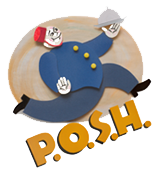Learn More About Gio Ponti
Among the most prolific talents to grace twentieth-century design, Giovanni (Gio) Ponti defied categorization. Though trained as an architect, he made major contributions to the decorative arts, designing in such disparate materials as ceramics, glass, wood and metal. A powerhouse of creative genius, Ponti embraced new materials like plastic and aluminum but employed traditional materials such as marble and wood in original, unconventional ways.
Gio Ponti was born in 1891 and although he would live his entire life in Milan, his work and influence was global in its reach: as a designer, he worked for 120 companies; as an architect, he built in 13 countries; as a magazine editor, he produced 560 issues and wrote at least one article for each one; as an academic, he lectured in 24 countries. He also found time to dictate some 2,500 letters and draw 2,000 illustrated letters, as well as paint and write poetry.
As a young child, Gio Ponti showed great artistic ability and excelled at painting. Feeling that a career in architecture was preferable to that of a painter, Ponti’s parents encouraged him to pursue the former and in 1914 he enrolled at the Faculty of Architecture at the Politecnico di Milano. Following his studies in architecture, he worked for two years as an architect before becoming the artistic director of the famed Richard Ginori ceramics factory in 1923. The innovative designs Gio Ponti created for Ginori were awarded a Grand Prix at the 1925 "Exposition Internationale des Arts Décoratifs et Industriels Modernes" in Paris.
In addition to architectural projects during the 1920s, Ponti also designed furniture for the La Rinascente department store and by 1928 founded the famed architecture and design magazine "Domus", which is still being published today.
From 1936 until 1961, Gio Ponti was a professor of architecture at his alma mater in Milan and wrote numerous books on art, design and architecture. His 1957 book, Amate l’architettura, is considered to be a microcosm of his work - an incredible legacy spanning art, architecture, industrial design, publishing and academia.
During the 1950s boom of ocean liners, Ponti was called in to design the interior of two new major Italian transatlantic liners: the Giulio Cesare and the Andrea Doria. His renowned thirty-four story Pirelli Building (1958), which to this day is seen as a premier example of modern Italian architecture, is regarded as Gio Ponti's architectural masterpiece. Other notable designs in Gio Ponti's portfolio are the Denver Art Museum (1971), his legendary "Superleggera" chair for Cassina (1957), the glass and lighting he did for Venini (1946-1950), the legendary coffee machine for La Pavoni (1948) and the iconic Parco dei Principi Hotel perched on a cliff overlooking the Gulf of Naples in Sorrento (1960-62).
In September 1979, Gio Ponti passed away at home in his beloved city of Milan at the age of 87.

